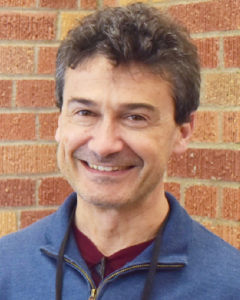

メンバー
メンバー紹介

Maurice Garcia-Sciveres
主任研究員
量子場計測システム国際拠点(QUP)
Senior Scientist
Lawrence Berkeley National Laboratory
e-mail mgs-at-lbl.gov
Maurice Garcia-Sciveres received his PhD from Cornell in 1994 for the measurement of Vcb in the CLEO e+e- collider experiment. He was a postdoc, then scientist, and now senior scientist at LBNL, where he worked on the CDF and ATLAS experiments. He focused on development of readout integrated circuits for silicon vertex detectors, and was recognized for his contributions in this area with an APS fellowship in 2015. In 2013 he co-founded the CERN RD53 collaboration to develop pixel detector readout chips for ATLAS and CMS, and has served as co-spokesperson since. Since 2018 he has been PI for the LBNL Quantum Information Science Enabled Discovery (QuantISED) program of DOE and increasingly worked on instrumentation for low mass dark matter direct detection.
Research Content
My research focus is on instrumentation development for discovery of new particle interactions at both extremes of energy and intensity. At the high energy/intensity extreme I focus on hybrid pixel detector technology and pixel readout integrated circuits in particular. I co-lead the cern.ch/RD53 collaboration after co-founding it in 2013. In 2022 RD53 will deliver the HL-LHC production pixel readout chips for both ATLAS and CMS. Looking beyond that milestone I am active in shaping the the next generation of readout after that, currently focused on 28nm CMOS design, as as well as in applying hybrid pixel readout technology to other areas.
At the low energy/intensity extreme I focus on technology to extend sensitivity of low mass particle dark matter searches, for example in the SPICE-HeRALD experiment of which I am a member. I lead the Berkeley/Caltech/Princeton/U.Mass/Yale QuantISED Quest program since 2018, which aims to develop new types of low energy noiseless phonon sensors leveraging QIS advances. Related to both quantum sensing and pixel readout integrated circuit technology, I also lead an effort to develop a new type of image sensor monolithically integrating nano-sensors with CMOS.
Related Research Results
RD53 presentations
28nmCMOSSnowmassLOI
SPICE-HeRALDSnowmassLOI
QuantISED Quest
Nano-sensors on CMOS
